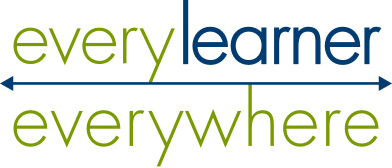Evidence-based teaching practices help educators provide high-quality instruction necessary to using digital learning tools effectively. After all, to teach well with technology, you first must teach well.
As Every Learner Everywhere’s director, I am proud to work with a network of partners committed to promoting uses of technology that draw on evidence-based teaching (EBT) practices to help every student succeed. Yet misunderstanding and fear about this framework persists.
Defining evidence-based teaching practices
EBT practices are instructional strategies that research demonstrates are effective for student learning. Early versions of the framework identified six areas of emphasis, but after additional research the current framework identifies eight:
- Active learning, such as simulations and animations
- Assess and activate prior knowledge to better understand how instruction can be designed around students’ interests and current levels of understanding.
- Data-informed instruction, such as using data dashboards
- Formative practice and assessment, such as timely, targeted, and ungraded feedback
- Fostering a sense of belonging through an inclusive learning environment, such as culturally responsive pedagogy
- Instructional transparency, such as mapping content to outcomes
- Meta-cognition, self-regulation, and agency, such as student self-assessment
- Peer Collaboration by creating opportunities for students to support one another’s learning
Exploring evidence-based teaching’s benefits
Incorporating practices in any of these areas can provide a host of benefits for instructors and students alike. Use of these practices can help colleges and universities pursue their goals in:
- Enhancing instruction
- Increasing engagement
- Promoting a sense of belonging
- Improving persistence and graduation rates
- Encouraging the efficient use of instructional time
Dispelling myths about evidence-based teaching practices
Despite the value that evidence-based teaching practices can provide, instructors sometimes have misconceptions about them that stand in the way of their use.
Myth 1: They require big changes
The use of EBT practices doesn’t have to include a complete overhaul of instructional plans. Educators can begin by incorporating small changes and then gradually expanding their use. Starting small is surprisingly easy and makes the addition of EBT practices more manageable.
A great way to see this in action is to browse the growing library on Transform Learning of examples of how college instructors are implementing EBT practices in their courses.
Myth 2: They don’t make a difference
EBT practices make a big impact relative to the effort they require, and those who wonder whether this type of instruction is making a difference in their classes need look no further than their students for answers. A one- or two-question survey — using digital polling tools for example — can help instructors to quickly get feedback on these teaching practices and make adjustments as needed.
Myth 3: They’re too time consuming
Given that lack of time and resources is common among instructors, they may be reluctant to add to their workload by building in new instructional approaches. But establishing a foundation of EBT practices now saves time and planning in the long run. Each new small change can be built on as an instructor gradually incorporates more evidence-based teaching.
Myth 4: They don’t apply to all subjects
EBT practices are appropriate for the humanities, sciences, arts, technology, engineering, math, and social sciences. For example, having students work as co-participants — a dimension of active learning — is a method that, with creativity, can support student learning in any discipline.
Myth 5: They stifle creativity
Educators can tailor evidence-based instruction to whatever approach fits best with their current teaching style, their students’ learning style, or the class modality.
There are many ways, for example, to separate students into the small groups or partners that facilitate discussion and peer learning, using online breakout rooms or any of a variety of physical spaces.
Myth 6: They’re too difficult to learn
Whether instructors are seeking free in-depth professional development, a few inspiring ideas, or research about high-impact instruction with digital tools, Every Learner and its network partners can help.
This is just a sample of the resources available on EBT practices:
- Transform Learning: This website, in addition to the example library mentioned earlier, offers in-depth exploration of each of the eight EBT practices, including supporting research.
- What Our Best College Instructors Do: This report, written primarily by college students, shares stories and reflections about the instructional practices they find engaging and meaningful.
- Strategies for Success in Digital Learning: This webinar, featuring Dr. Aireale Rodgers of the University of Wisconsin-Madison, presents six considerations for the use of courseware to foster success for every learner.
- Ask an Expert Live Q & A: Evidence-Based Teaching: This archived recording features a panel of educators discussing strategies that impact student engagement, metacognitive skills, and long-term content retention in the digital classroom.
Every Learner continues to add new webinars and workshops on evidence-based teaching practices that help college instructors put them into action.
As you can see, our network of partner organizations offers expertise in evaluating, implementing, scaling, personalizing, and measuring digital learning technologies. Our goal is to help educators use new technology in ways that improve teaching and learning. Incorporating these evidence-based practices is a great way to continue transforming education in ways that help students succeed.
Laura DaVinci has been director of Every Learner Everywhere since December 2024, following six years with the organization and two decades working in higher education and nonprofits supporting education. She holds a master’s degree in business administration from Eastern New Mexico University and a bachelor’s degree in international business from Alexandru Ioan Cuza University in Romania. She is pursuing a doctoral degree in leadership from Virginia Commonwealth University, graduating in May 2025.
Browse professional development services on digital teaching and learning


